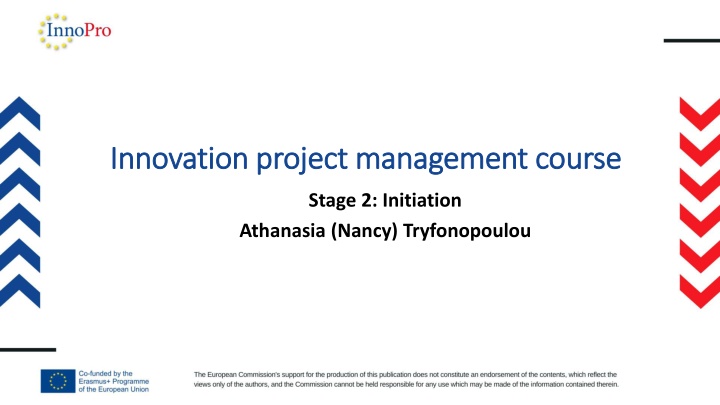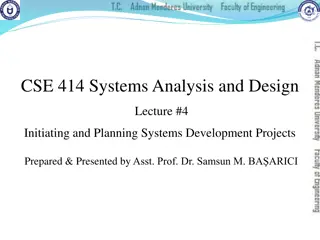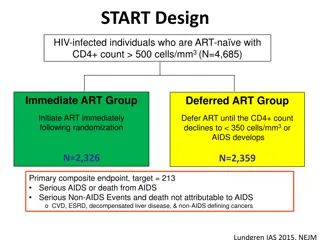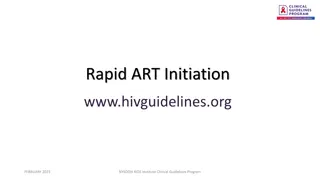
Effective Project Initiation: Setting the Foundation for Success
Discover the importance of Project Initiation in this detailed guide. Learn how to draft a Project Initiation Plan, develop a Project Charter, set SMART Goals, define a Project Scope Statement, and more. Understand the significance of Project Identification and Definition, and how it leads to the creation of a Project Charter, essential for project planning and execution.
Download Presentation

Please find below an Image/Link to download the presentation.
The content on the website is provided AS IS for your information and personal use only. It may not be sold, licensed, or shared on other websites without obtaining consent from the author. If you encounter any issues during the download, it is possible that the publisher has removed the file from their server.
You are allowed to download the files provided on this website for personal or commercial use, subject to the condition that they are used lawfully. All files are the property of their respective owners.
The content on the website is provided AS IS for your information and personal use only. It may not be sold, licensed, or shared on other websites without obtaining consent from the author.
E N D
Presentation Transcript
Innovation Innovation project project management management course course Stage 2: Initiation Athanasia (Nancy) Tryfonopoulou
Initiation Initiation Stage Description Initiation sets the terms of reference within which the project will run. The business problem or opportunity is identified, a solution is defined, a project is formed, and a project team is appointed to build and deliver the solution. Initiation ends with the establishment of the plans and processes needed to take the project forward. Stage Objectives and Learning Outcomes Students are getting acquainted with and improve their understanding of Project Initiation. 1. Students draft a Project Initiation Plan. 2. Students develop a Project Charter. 3. Students set SMART and SMARTER Goals. 4. Students are familiarised with the Logical Framework Matrix. 5. Students define a Project Scope Statement. 6. Students contact Project Stakeholders Analysis.
Initiation Initiation Stage Structure In this stage the project Purpose is defined, the Goals, Questions and Scope of the project are decided, the project Deliverables are specified, and an initial project Budget is determined. Also, the Stakeholders are designated, and their expectations are set. As a final sub-stage, project Fundraising is available where the Analysis of Grant Resources is made, Instruments for Financing Innovations and Public Procurements are provided.
Before starting to work on a project the first step to be taken is Project Identification, where we assess each project idea and select the project with the highest priority while taking into consideration the resource capacities and capabilities. It proceeds Project Initiation. Project Project Identification and Identification and Definition Definition This often begins with a business case, which outlines the objectives, purpose, and deliverables of the proposed project. Stakeholders are identified, and the requirements of the project are documented. In addition to explaining the business value of the project, the charter outlines the objectives, scope, resources, and budget for the project. Any feasibility testing should also take place during this phase. Project Initiation Project Initiation The primary output of this phase is called a Project Charter, this key output assists with Planning in Stage 3: Design, since it defines and justifies your project and its scope, secures funding for the project (if necessary) and defines the roles and responsibilities of project participants answering the key questions of What? Why? Who? How? When? Project Charter Project Charter
The project purpose explains the reason for the projects existence. It is the sense of what is done, the ambition or the dream pursued by the project. So, the project purpose answers the important question of why the project exists. Project Project Purpose Purpose The focus of the project purpose is to create a clear and correct understanding of the project in the minds of the people, the stakeholders, involved in the planning and development process. The purpose is a statement, a declarative sentence which summarises the specific goals of the project. To be effective, this statement of purpose should be: Concise and Singular Specific and precise Goal-oriented Clear Complete Credible
A project goal is a tangible statement of what a project should achieve. It shows a clear direction and gives motivation. The tangible deliverables that support this goal are the objectives of the project. Basically, Project Objectives define how the project result is going to look like. Goals are usually a broader or general statement about what the project is to attain. The objectives (higher goals) should be specific and measurable. SMART goal setting can be used as well as Logical Framework Approach technique. KPIs can also be defined as project objectives. Project Goals Project Goals and and Questions Questions
For a project plan to be accurate, the first thing that needs to be performed is defining the project scope. It is the totality of the purpose, vision, and work effort for a given project and is defined as the body of work, the overall tasks, activities and decisions, that must be completed in order to ensure that project goals and deliverables are met. A project scope statement is a written document that includes all the required information for producing project deliverables. Objectives and tasks not listed in the project scope statement should be considered out of scope. Project managers can also list specific work that will not be part of the project. Project Scope Project Scope Project Project Deliverables Deliverables (Outputs & (Outputs & Outcomes) Outcomes) Project Deliverables are defined by the tangible result or outcome of a given project, whether intellectual/logical or physical. Deliverables can vary according to the project s specifications and the stakeholders requirements. A project deliverable is any specific output created as a result of work performed during the lifecycle of a project. Deliverables are the final outputs that are transferred to a third party outside of the project.
The Project Budget is a tool used by project managers to estimate the total cost of a project. It is the detailed estimation of all costs needed to complete the project and, additionally, an estimation of what else is likely to arise before the project is completed and over the defined period of the project lifecycle. The Project Budget itself is a dynamic document used to estimate what the costs of the project will be for every phase of the project. It is continuously reviewed, revised, and updated over the course of the project. The Project Budget is the combined costs of all activities, tasks, and milestones that the project must fulfil and will include aspects such as labour costs, material procurement costs and operating costs. Initial Project Initial Project Budget Budget
Project stakeholders are people (or groups) who can affect, be affected by, or believe to be affected by the decisions and/or the activities carried out during a project s lifecycle and/or by its output(s) and outcome(s). The effect can be real or perceived. Project stakeholders are entities that have an interest in the given project, they can be directly involved in a project s work (internal), be members of other internal organisations or external to the organisation and they may have a positive or negative influence in the project completion. To complete the project successfully, all these stakeholders must be managed, and their prospects fulfilled. Therefore, they should be identified and to do that you should conduct a Stakeholder Analysis to determine all the stakeholders. Project Project Stakeholders Stakeholders
Funding is essential to get the project started and set all resources in motion. There are different potential sources of funding, depending on the aim and topic of the project. There are Grants, Tenders, Sponsorships, Donations, Community-Business partnership, Rotary, crowdfunding campaigns or local fundraising events. Project Fundraising Project Fundraising The resource-based view (RBV) is a managerial framework used to determine the strategic resources a company can exploit to achieve sustainable competitive advantage. One of the most common models for the implementation of RBV in organisations is the model proposed by Grant, an action plan for managers to identify their resources, then identify the capabilities, appraise competitive advantage, and then to use the applicable strategy that will better exploit these resources and capabilities. Grant Resources Grant Resources Analysis Analysis Public procurement refers to the process whereby public authorities, such as government departments or local authorities, purchase work, goods, or services from companies. Usually, all medium and higher value contracts must be awarded through competitive procedures (tenders), although there are exclusions and exceptions, such as purchasing real estate, cases of extreme urgency or situations where there is only one possible supplier. Public Procurements Public Procurements
The Project Charter is concerned with the documentation of the business needs, the project justification, the project requirements as of today and the results intended to be satisfied. It can be used as a reference point for the goals of the project throughits objectives. According to PMBOK (PMI, 2017) the Project Charter should address: Project Charter Project Charter Project purpose and/or justification. Measurable project objectives and related success criteria (ROI). High level requirements that the project be meant to address (objectives). Organisational, environmental, and external assumptions and constraints. High-level project description and boundaries. High-level risks. Stakeholder list. Budget summary and Resources needed. Summary of the milestones schedule (timeline). Project approvalrequirements. Determined Project Manager and their authority level and the Roles and Responsibilities of the project team. Project Sponsor. The Project Charter must be established at the very beginning of the project to ensure the smooth process of the project implementation and in fact to make the project and the project manager legitimate. For this reason, it needs to be clear, direct, and concise without using technical terms and acronyms.
THANK YOU FOR YOUR ATTENTION






















